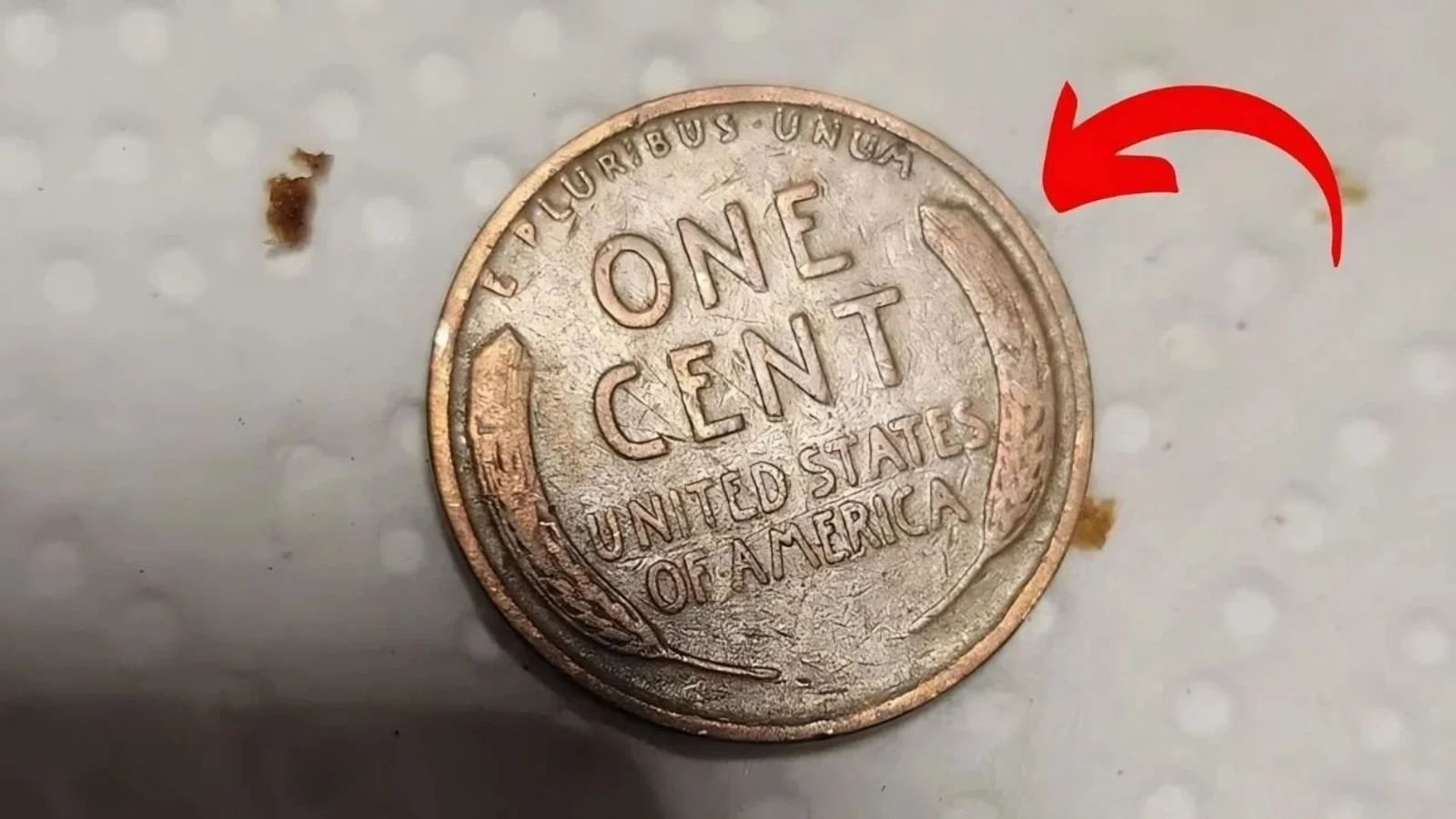Imagine stumbling across a humble penny in your loose change, only to discover it could be worth up to $5 million. It might sound unbelievable, but for collectors and numismatists, the Lincoln Wheat Penny is one of the most sought-after coins in U.S. history. With a captivating blend of history, design artistry, minting errors, and sheer rarity, these small copper pieces have turned everyday pocket change into potential windfalls. In this in-depth exploration, we uncover why the Lincoln Wheat Penny continues to mesmerize coin collectors and investors alike.
What Is a Lincoln Wheat Penny?
A Piece of History in Your Hand
The Lincoln Wheat Penny was introduced in 1909 to commemorate the 100th anniversary of Abraham Lincoln’s birth. It marked a significant shift in U.S. coinage, being the first American coin to feature the image of a real person. Created by sculptor Victor David Brenner, the coin features a side profile of Lincoln on the obverse, while the reverse showcases two stylized wheat ears encasing the denomination “ONE CENT.” This reverse design remained in use until 1958, after which it was replaced by the Lincoln Memorial design.
These coins were minted in Philadelphia, Denver, and San Francisco and were widely circulated throughout the United States. But not all Lincoln Wheat Pennies are created equal—certain years, mints, and errors make some of these pennies incredibly valuable.
Why Are Lincoln Wheat Pennies So Valuable?
Not All Cents Are Equal
While most Lincoln Wheat Pennies might only fetch a few cents over their face value, others can command thousands—even millions—of dollars. Here’s what makes certain Lincoln Wheat Pennies so valuable:
- Minting Errors: Mistakes during production can lead to double images, missing mint marks, or wrong materials being used. These errors are often extremely rare and prized by collectors.
- Limited Mintage: Coins produced in smaller quantities, like those from the San Francisco mint or specific years like 1909 and 1914, are harder to find.
- Historical Context: Coins minted during significant historical events or transition periods, such as World War II, often have enhanced value.
- Condition: A coin’s grade—how well-preserved it is—can exponentially affect its worth. Uncirculated Lincoln Wheat Pennies in mint condition are especially valuable.
Rare and Valuable Lincoln Wheat Penny Varieties
Let’s take a closer look at some of the most coveted Lincoln Wheat Pennies collectors are constantly searching for:
1909-S VDB Lincoln Wheat Penny
This coin was the first to carry the initials of designer Victor David Brenner (VDB) on the reverse. But controversy led to the Mint removing the initials shortly after release. Only 484,000 coins were minted in San Francisco with the VDB initials, making this one of the most desired Lincoln Wheat Pennies.
- Estimated Value (Mint State): $1,000 – $100,000
1943 Bronze Lincoln Wheat Penny
During World War II, copper was needed for wartime production, so the Mint switched to zinc-coated steel for penny production in 1943. However, a few bronze blanks were accidentally used, resulting in the now-famous 1943 bronze Lincoln Wheat Penny. Fewer than 20 are known to exist.
- Estimated Value: $1.7 million – $5 million
1955 Doubled Die Obverse Lincoln Wheat Penny
This error coin is easily recognizable due to the obvious doubling of letters and numbers on the obverse. The “LIBERTY,” “IN GOD WE TRUST,” and the date are all visibly doubled. It’s one of the most popular error coins ever minted.
- Estimated Value: $20,000 – $50,000
1914-D Lincoln Wheat Penny
With only 1.2 million coins minted in Denver, the 1914-D is one of the lowest-mintage regular-issue Lincoln Wheat Pennies. Finding one in excellent condition is a dream for many collectors.
- Estimated Value (High Grade): $2,500 – $100,000
1922 No D Lincoln Wheat Penny
The Denver Mint was the only mint producing pennies in 1922, but due to excessive die polishing, some coins were struck without a visible mint mark. These “No D” pennies are rare and highly collectible.
- Estimated Value: $15,000 – $80,000
How to Identify Valuable Lincoln Wheat Pennies
Finding a rare Lincoln Wheat Penny requires more than just luck. Here’s what to look for:
- Mint Marks: Located below the date on the obverse. “S” indicates San Francisco, “D” for Denver, and no mark means Philadelphia.
- Year: Key dates include 1909-S VDB, 1914-D, 1922 No D, 1943 Bronze, and 1955 Doubled Die.
- Material: Use a magnet for 1943 pennies. If it sticks, it’s steel. If not, it could be the ultra-rare bronze.
- Weight: Use a digital scale. Copper pennies weigh about 3.11 grams; steel ones are lighter.
- Condition: Coins without wear, scratches, or discoloration are far more valuable. Professional grading is recommended for rare finds.
Where to Find Lincoln Wheat Pennies
The treasure hunt can begin right at home. Here are some common places to look:
- Loose Change: Yes, rare pennies can still be found in circulation.
- Coin Rolls from Banks: Request rolls of pennies and sort through them.
- Estate Sales and Flea Markets: Older collections often surface in these settings.
- Family Heirlooms: Old jars or inherited collections could hold valuable surprises.
Getting Your Lincoln Wheat Penny Appraised
If you suspect you’ve found a rare Lincoln Wheat Penny, don’t clean it! Cleaning can drastically reduce a coin’s value. Instead:
- Consult a Professional: Take it to a coin dealer or a certified numismatist.
- Use Grading Services: Companies like PCGS or NGC provide official certification and valuation.
- Research Online: Use reliable coin databases to get a rough estimate.
The Lincoln Wheat Penny Collector Community
The Lincoln Wheat Penny has inspired an enormous and dedicated collector base. From online forums and social media groups to in-person coin shows and conventions, the enthusiasm around these tiny coins is immense. Collectors share finds, debate varieties, and offer advice on spotting fakes.
Popular communities include:
- CoinTalk
- Reddit r/coins
- PCGS Forums
- Local coin clubs
Investing in Lincoln Wheat Pennies
While collecting should be driven by passion, there’s no denying the investment potential. Rare Lincoln Wheat Pennies, particularly in high grades, have appreciated significantly in value. Coins that sold for a few hundred dollars decades ago now sell for tens of thousands, and their value is expected to grow with increasing scarcity.
But like all investments, it comes with risks. Market demand can fluctuate, and prices depend on condition and authenticity. That said, well-preserved, certified Lincoln Wheat Pennies are among the most stable long-term coin investments.
Caring for Your Lincoln Wheat Penny Collection
To maintain the value of your Lincoln Wheat Pennies:
- Use Non-PVC Holders: These prevent chemical reactions that damage coins.
- Avoid Handling with Bare Hands: Use cotton gloves or hold by the edges.
- Store in Cool, Dry Conditions: Humidity and temperature extremes can harm coins.
- Label Clearly: Document mint year, mint mark, and any known errors.
Conclusion: More Than Just Spare Change
The Lincoln Wheat Penny is more than just an old coin—it’s a tangible piece of American history that tells a story of artistry, war, and economic change. From its inception in 1909 to its final minting in 1958, it has captivated the imaginations of collectors across generations. Whether you’re in it for the thrill of the hunt, the historical appreciation, or the financial opportunity, the Lincoln Wheat Penny offers a rewarding journey.
So the next time you receive a penny in your change, don’t be too quick to spend it. That small copper coin could be a rare Lincoln Wheat Penny, quietly holding a fortune in your palm.
Some Important Link
| Telegram Group | Click Here |
| WhatsApp Group | Click Here |
| Home Page | Click Here |











